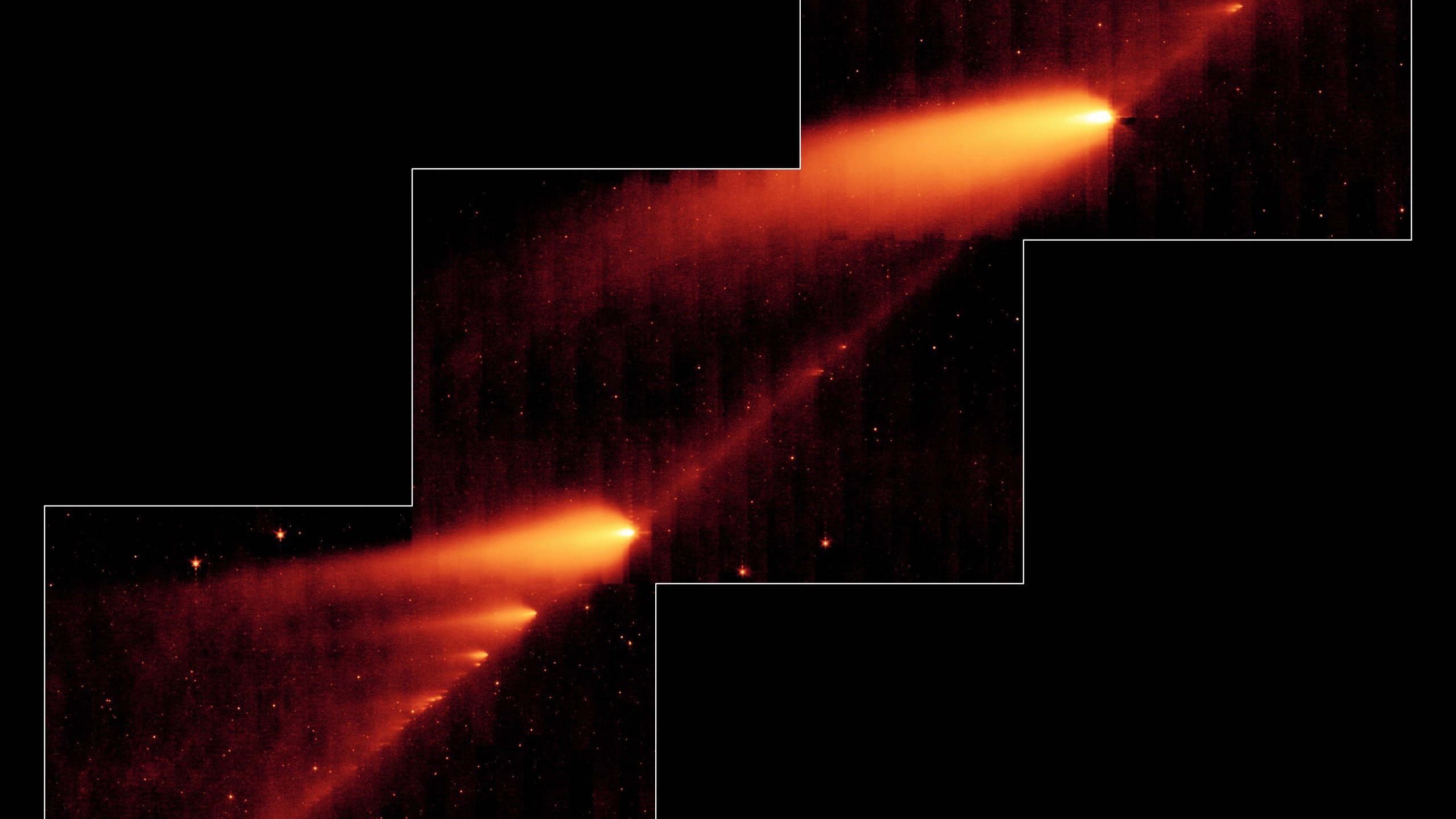
A new meteor shower might dazzle or disappoint star-gazers watching the skies late Monday into Tuesday morning.
The tau Herculids meteor shower could produce 1,000 shooting stars per hour — some predictions are as high as 10,000 to 100,000 per hour — as the Earth passes through debris trails from Comet 73P/Schwassmann-Wachmann 3.
Or, it could fizzle out completely.
“Scientists don’t really know,” said NBC4 forecaster David Biggar. “Actually, it could be a lot or could be pretty much nothing.”
Will we see a meteor shower?
The brilliant-or-bust nature of the event has a lot to do with how the comet, which broke into large fragments in 1995, disintegrated.
“This is going to be an all or nothing event,” said Bill Cooke, who leads NASA’s Meteoroid Environment Office at the Marshall Space Flight Center in Alabama. “If the debris from SW3 was traveling more than 220 miles per hour when it separated from the comet, we might see a nice meteor shower. If the debris had slower ejection speeds, then nothing will make it to Earth and there will be no meteors from this comet.”
An estimated 48.5 tons of meteoritic material falls on Earth daily, most of which is vaporized by the planet’s atmosphere. The result is a bright trail we refer to as shooting stars.
This comet was discovered in 1930, but this is the first time Earth’s orbit meets all of the debris ejected from the 1995 breakup. That makes it a rare new potential meteor shower.
At least some of those fragments are believed to be moving fast enough to put on a display, so let’s see what happens.
When is the best time to see the possible meteor shower?
Sky-watchers will want to keep an eye out on Monday night into early Tuesday morning.
The peak time is around 10 p.m. in California, according to NASA. The best chance will be for observers under clear, dark skies.
Areas to the south are expected to have the best views. The moon will be new, meaning less light to interfere.
As for clouds, clear skies will continue into the evening for most of Southern California before patchy clouds early Tuesday morning.
And, if it turns out to be a dud, you can look forward to other sky-gazing events this year.
